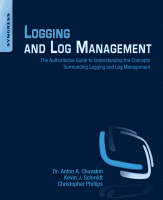Introduction
System administrators (sysadmins) are the unsung heroes of the IT world. They work tirelessly behind the scenes to ensure that computer systems run smoothly, networks remain secure, and data stays accessible. One of the fundamental tools in a sysadmin’s toolkit is system logging and log management.
Logs, in essence, are records of events that occur within a system or application. They can be invaluable for diagnosing issues, troubleshooting problems, and monitoring the health of your infrastructure. However, managing logs effectively can be a daunting task, especially in large-scale environments. In this blog post, we’ll explore the importance of system logging and provide guidance on how sysadmins can efficiently handle logs.
The Significance of Logging
Logs serve several essential purposes for sysadmins:
Troubleshooting and Debugging: Logs are a treasure trove of information when things go wrong. They provide a detailed history of events leading up to an issue, helping sysadmins identify the root cause quickly.
Security: Logs can be a valuable tool for monitoring and detecting security breaches. They record login attempts, system changes, and suspicious activities that might indicate a cyberattack.
Performance Monitoring: Sysadmins can use logs to monitor system performance over time. By analyzing trends and patterns, they can identify areas that need improvement or optimization.
Compliance: Many industries and organizations have legal and regulatory requirements for log retention and auditing. Proper log management helps ensure compliance with these regulations.
Best Practices for Logging
Effective logging requires following best practices to ensure that the logs generated are useful and manageable:
Use Descriptive Log Messages: Log messages should be clear and descriptive, making it easier to understand the context of an event.
Include Timestamps: Every log entry should include a timestamp, indicating when the event occurred. This is crucial for correlating events and identifying the sequence of actions leading to an issue.
Log Levels: Implement a log level hierarchy, such as INFO, WARNING, and ERROR, to categorize the severity of log events. This helps prioritize troubleshooting efforts.
Centralized Logging: Store logs in a centralized location for easy access and analysis. Centralized logging solutions like ELK Stack (Elasticsearch, Logstash, Kibana) or Splunk are popular choices.
Log Rotation: Set up log rotation to prevent logs from consuming too much disk space. Older log entries can be archived or deleted, depending on your retention policies.
Log Management Tools
Sysadmins have access to a plethora of log management tools to simplify the process of handling logs. Here are four popular options:
Logstash: Part of the ELK Stack, Logstash is an open-source log ingestion and transformation tool. It allows you to collect, process, and send logs to Elasticsearch for storage and Kibana for visualization.
Splunk: Splunk is a robust log management and analysis platform that offers real-time monitoring, alerting, and visualization of log data. It’s known for its scalability and powerful search capabilities.
Graylog: Graylog is an open-source log management platform that simplifies log collection, storage, and analysis. It provides an intuitive web interface and supports alerting and dashboard creation.
Papertrail: Papertrail is a cloud-based log management solution that is easy to set up and use. It offers real-time log streaming, search, and alerting, making it a good choice for small to medium-sized environments.
Conclusion
In the world of system administration, effective logging and log management are indispensable skills. Logs not only help sysadmins troubleshoot issues and monitor performance but also play a crucial role in ensuring the security and compliance of IT infrastructure.
By following best practices for logging and leveraging log management tools, sysadmins can streamline their workflow, reduce downtime, and enhance the overall reliability of their systems. So, whether you’re a seasoned sysadmin or just starting your career, mastering the art of system logging is a must-have skill that will set you apart in the world of IT.
In future blog posts, we’ll dive deeper into the specifics of various log management tools and explore advanced logging techniques. Stay tuned for more insights into the fascinating world of sysadmin log mastery!


